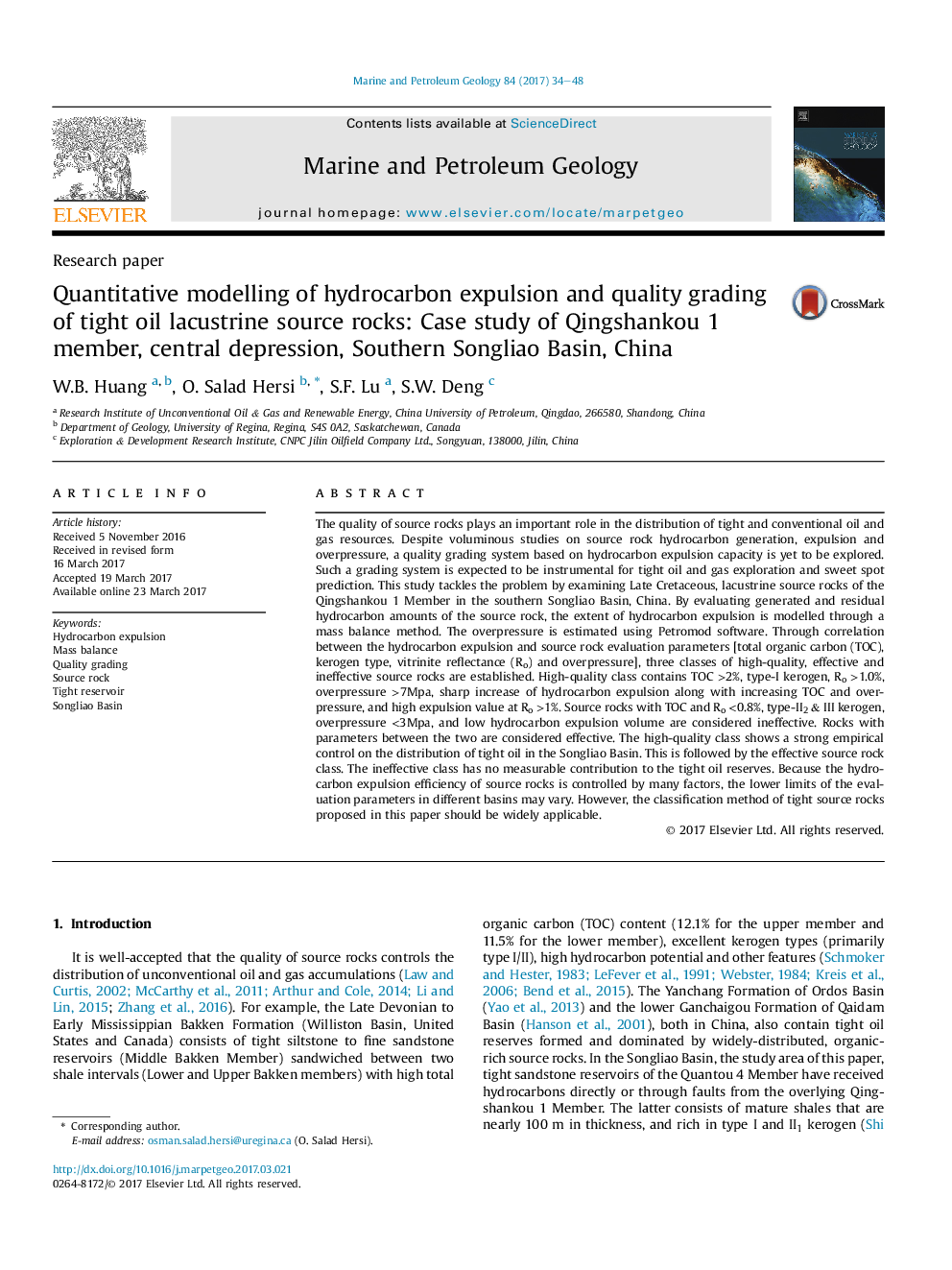| کد مقاله | کد نشریه | سال انتشار | مقاله انگلیسی | نسخه تمام متن |
|---|---|---|---|---|
| 5782047 | 1637143 | 2017 | 15 صفحه PDF | دانلود رایگان |

- Hydrocarbon expulsion from lacustrine source rocks.
- Conversion of kerogen to oil and importance of ensuing overpressure for hydrcarbon expulsion.
- Quality grading of source rocks.
- Source rock thickness distribution vis-Ã -vis tight reservoir charging potential.
- Guide for tight oil and gas exploration and sweet spot prediction.
The quality of source rocks plays an important role in the distribution of tight and conventional oil and gas resources. Despite voluminous studies on source rock hydrocarbon generation, expulsion and overpressure, a quality grading system based on hydrocarbon expulsion capacity is yet to be explored. Such a grading system is expected to be instrumental for tight oil and gas exploration and sweet spot prediction. This study tackles the problem by examining Late Cretaceous, lacustrine source rocks of the Qingshankou 1 Member in the southern Songliao Basin, China. By evaluating generated and residual hydrocarbon amounts of the source rock, the extent of hydrocarbon expulsion is modelled through a mass balance method. The overpressure is estimated using Petromod software. Through correlation between the hydrocarbon expulsion and source rock evaluation parameters [total organic carbon (TOC), kerogen type, vitrinite reflectance (Ro) and overpressure], three classes of high-quality, effective and ineffective source rocks are established. High-quality class contains TOC >2%, type-I kerogen, Ro >1.0%, overpressure >7Mpa, sharp increase of hydrocarbon expulsion along with increasing TOC and overpressure, and high expulsion value at Ro >1%. Source rocks with TOC and Ro <0.8%, type-II2 & III kerogen, overpressure <3Mpa, and low hydrocarbon expulsion volume are considered ineffective. Rocks with parameters between the two are considered effective. The high-quality class shows a strong empirical control on the distribution of tight oil in the Songliao Basin. This is followed by the effective source rock class. The ineffective class has no measurable contribution to the tight oil reserves. Because the hydrocarbon expulsion efficiency of source rocks is controlled by many factors, the lower limits of the evaluation parameters in different basins may vary. However, the classification method of tight source rocks proposed in this paper should be widely applicable.
Journal: Marine and Petroleum Geology - Volume 84, June 2017, Pages 34-48